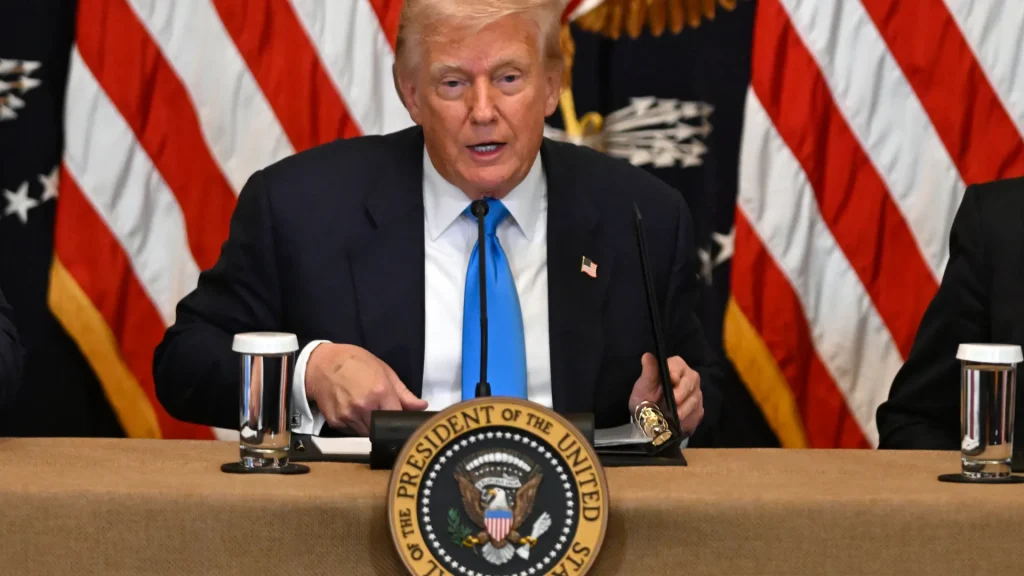While former President Donald Trump and his allies continue to tout a robust economy driven by bold policies and deregulation, recent developments suggest a more concerning reality. Key economic indicators once seen as hallmarks of Trump’s self-proclaimed success are now exhibiting cracks beneath the surface. Sluggish job growth, rising inflation, strained trade relationships, and dwindling public trust in economic institutions paint a sobering picture of the U.S. economy in 2025.
Job Growth Slows Significantly
Once considered a strength, the American labor market is showing signs of fatigue. Revised employment data indicates that job growth has been overstated in recent months, particularly in sectors like manufacturing and logistics. The revised figures reflect the weakest quarterly job performance since the global financial crisis, excluding the COVID-19 period.
This decline in employment momentum has raised alarms among economists and investors, prompting questions about the effectiveness of Trump-era tax policies and deregulation strategies. The public backlash intensified when the administration abruptly removed key personnel from labor data agencies, drawing criticism for undermining transparency and institutional independence.
Inflation Pressures Mount
American consumers are feeling the pressure of persistent inflation. Despite earlier government assertions of price stabilization, consumer goods and energy prices continue to climb. A key driver behind the inflationary surge has been the reintroduction of wide-ranging tariffs on imports particularly on goods from neighboring countries and major trade partners.
These trade measures, intended to protect domestic manufacturing, have inadvertently inflated prices across the supply chain. Small businesses and working-class households are absorbing the bulk of these costs. In some regions, household budgets are under intense strain, with spending power declining and savings eroding.
GDP Figures Offer a Misleading Narrative
While initial reports indicated a GDP growth rate of over 3% for Q2 2025, a closer analysis reveals that this figure was buoyed by volatile trade figures and temporary inventory surges rather than sustained economic activity. In reality, the average GDP growth for the first half of 2025 stands at a modest 1.2% well below the levels needed to support full employment or increase median wages.
Consumer spending, business investments, and housing starts have all slowed, suggesting the GDP growth reported is more of an anomaly than a trend. Economists warn that the risk of stagflation a combination of stagnant growth and rising prices may be on the horizon.
Tariffs Causing Trade Disruption and Market Uncertainty
Trump’s aggressive tariff strategy, including steep import duties on goods from Canada, Mexico, and China, has disrupted global supply chains and triggered retaliatory measures from trade partners. American exporters have faced declining demand, while domestic manufacturers are burdened with higher input costs.
The effects of these tariffs are visible in consumer pricing, reduced investment confidence, and stock market volatility. Investors have been particularly wary, with major indexes experiencing frequent swings and capital flight towards safer asset classes. The trade conflict is no longer just an international relations concern it is now a domestic economic challenge.
Investor Confidence and Institutional Stability in Decline
One of the less visible but equally damaging consequences of current policies is the erosion of trust in key economic institutions. Repeated attacks on the Federal Reserve, the Bureau of Labor Statistics, and other data-reporting bodies have led to growing skepticism about the credibility of official figures. Markets depend on accurate, independent information. Any suggestion of manipulation or censorship injects uncertainty into long-term investment decisions.
Analysts and former officials warn that undermining economic institutions could have lasting repercussions, reducing America’s attractiveness as a secure destination for global capital. Institutional credibility, once considered a bedrock of U.S. economic dominance, is now perceived as vulnerable.
Outlook: A Tipping Point Ahead?
The Trump administration’s economic strategy centered on nationalism, deregulation, and tariffs appears to be reaching a crossroads. Initially lauded for its assertiveness and investor-friendly posture, the long-term consequences are beginning to materialize.
- Consumer sentiment has dipped, with fewer Americans confident in the job market and their financial future.
- Inflation-adjusted wages remain stagnant, especially among middle-income households.
- Business confidence has dropped, particularly in sectors exposed to international markets and regulatory ambiguity.
- Federal debt has surged, fueled by aggressive tax cuts and high defense spending, limiting the government’s room to maneuver during potential downturns.
With an election cycle looming, economic discontent may influence public opinion in unprecedented ways. Voters are increasingly focused on cost-of-living pressures, access to affordable healthcare, and wage security areas where current policies have shown limited progress.
Conclusion
Behind the bold rhetoric of economic revival lies a more complex and concerning reality. The Trump economy, once heralded as a model of growth and strength, now faces multiple headwinds. From stagnating jobs and inflation to trade instability and weakening institutional trust, the signs of vulnerability are clear. While some of these issues may be cyclical, others reflect deeper structural missteps that could take years to correct.
In this climate of uncertainty, the true strength of an economy lies not just in temporary numbers, but in resilient systems, sound governance, and policies that balance ambition with sustainability. Whether the current administration can pivot before long-term damage takes root remains to be seen.



Comments (0)
No comments yet. Be the first to comment!
Leave a Comment